Hello. This is a new correspondent, Hanes.![]()
![]()
The streets are getting more and more Christmas mood.
Everyone, are you preparing for Christmas smoothly?![]()
The other day, when it comes to winter, it is associated with North Europe, so I introduced Scandinavian spots that can be enjoyed in the city.
A foreign country associated with Christmas is Christmas...I guess it's in Germany.
In particular, the Christmas market in Germany is famous!
And Queen Victoria of England married Prince Albert from Germany,
Following German customs, we decorated the Christmas tree at Windsor Castle.
A photo of the Queen's family celebrating Christmas around the tree was later published in the newspaper.
Christmas trees have become popular among English ordinary people.![]()
That's why this time we will carefully select and deliver Germany that can be enjoyed in the city!
(In some places, the Chuo-ku Tourism Certification Measures are included![]() .)
.)
■German food
There are a number of German restaurants in the ward, and the one I would like to introduce this time.
It is Stein House Ginza, a German beer & wine specialty store in the Ginza Velvia Pavilion.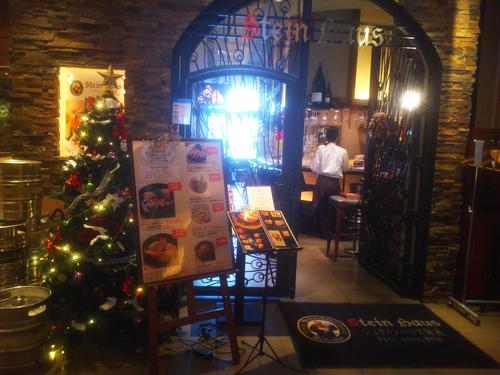
The reason why I chose this shop is that it has a good reputation for lunch!
For about 1,000 yen, you can enjoy German cuisine with a high level of authentic taste.
I ordered a hamburger lunch.![]()
First of all, from the appetizers served well....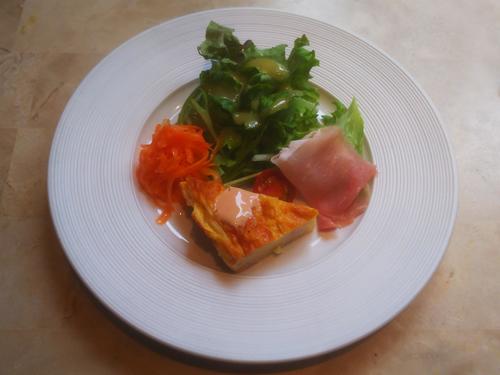
After a while, a good scent drifted softly from somewhere.
The main hamburger was brought in![]()
Hamburg that has already been established in Japan, but its origin is Germany!
As you can see in English, it is derived from the food of Hamburg, Germany.
According to the Japan Hamburger Association, Japan
The origin of the hamburger is said to be "Tartal steak, which was popular among workers in Hamburg, a port town in Germany around the 18th century."![]()

When you cut the 100% beef hamburger, it overflows with gravy.
The work laut was not too sour, and was just right.![]()
In addition, there are also popular sausage lunch and daily lunch.
It's perfect for enjoying authentic beer and sausage at night!
After the meal, I photographed black tea with a stone wall reminiscent of an old European castle.![]()
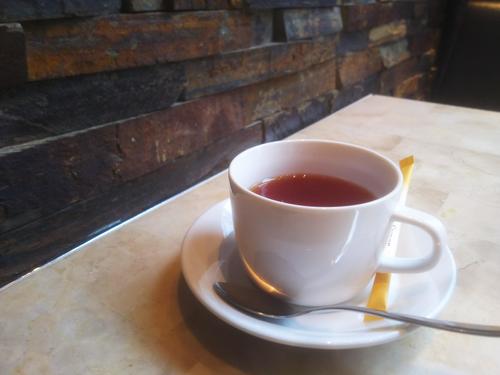
I've introduced the main dishes so far.
Actually, we are particular about this shop and interior, making it a fashionable space like Western Europe.![]()
For that reason, it was popular with women, and some people used it at women's associations.
It is recommended when you want to have an affordable German lunch in Ginza!
[Stine House Ginza]
Address: 8F Ginza Velvia Hall 2-4-6 Ginza, Chuo-ku, Tokyo
Business hours Lunch month to Friday from 11:30 to 14:30
Saturdays, Sundays and public holidays 11:30-14:30
Dinner month to Friday from 17:00 to 23:00
Saturdays, Sundays and public holidays 17:00-23:00
※We have received permission from the person in charge of Stein House Ginza.
■Scenery like Germany
Did you know that there is Kiyosu Bridge, a bridge reminiscent of German scenery in Chuo-ku?
It is said that this bridge was modeled on a suspension bridge in Cologne.
Unfortunately, the bridge that became the model disappeared during World War II.
You can see some European-style gorgeousness on the Cheongju Bridge.![]()
As Mr. Wienerhorn introduced the other day, Cheongju Bridge is currently under construction.
A little further away, I'm looking forward to seeing the beautiful bridge after the construction.
■Germans related to Chuo-ku
Those who take the sightseeing test may have already been in a pinch.
Yes, it's Siebold.![]()
Since he came to Japan as a doctor of Dutch trading post, he has a deep relationship with the Netherlands, but actually German!
It is the birthplace of Edo Dutch studies, and since Siebold's daughter Ine opened a maternity hospital in Tsukiji.
A statue is set up in Akatsuki Park in honor of Siebold's achievements.![]()
■German cultural facilities that I want to keep in mind
A reproduction picture scroll of "Kidai Shoran" is permanently installed on the underground concourse wall of Mitsukoshimae Station.
A bird's-eye view of the main street (currently Chuo-dori) from Nihonbashi to Imagawa Bridge around the 2nd year of culture (1805) from the east side, and before many buildings disappeared in the 1806 "Heitora Fire". It is a very valuable picture scroll (author unknown) that depicts the culture of townspeople in detail.![]()
The picture scroll depicts 88 wholesalers and shops along the road, 1671 people coming and going, 20 dogs, 13 horses, 4 cows, 1 monkey, 2 hawks, etc. It is worth a look even though it is duplicated.
It's such a picture scroll, but the original picture is not in Tokyo, New York or London, but in the National Museum of Asian Art in Berlin.![]()
There is a connection with Germany in unexpected places, so test takers need to check!
[Related Articles]
Nyanbo, "Nihonbashi of Kidai Shoran"
(What is a dog dropping that was a specialty of Edo? Click here for recommended references!
Mr. yaz "Kyodai Shoran Back Story"
(Lecture participation report. Click here for interesting stories that you can't know in Wikipedia!
Mr. Marsha Horiuchi of Edo "Life in Edo depicted in Kidai Shoran"
(Seminar Participation Report. If you want to go back in time during the Edo period, click here!
Chuo-ku Tourism Association Official Blog
Chuo-ku Tourism Association correspondent blog
Introducing Chuo-ku's seasonal information by sightseeing volunteer members who passed the Chuo-ku Tourism Association's Chuo-ku Tourism Certification and registered as correspondents.
List of AuthorsRecent blog post
|
I want to try it out! How to enjoy Germany in Chuo-ku
Ningyocho / Edomae Western restaurant famous "Yoshimitei" reopened on December 17 (Monday)!
This is Edamame, a correspondent with children. That's right. A red brick building is located just outside the entrance of amazake Yokocho. I was able to see it gradually. That's ...
Founded in Ningyocho in 1933, it is a famous restaurant for "Edomae Western Food". It was a new store of Homitei. I used to enter amazake Yokocho a little bit before. This time, the store has been relocated and reopened. The official opening will be on December 17th (Monday). I was invited to the "Private View" held before that. Moreover, there is also a vivid offer, "Oh, is it okay with children ...?" Thank you for your consent. And his daughter Azuki (3 years old) went to amazake Yokocho in the evening. There are new stores on the 1st to 3rd floors, but this time we visited the seats on the 2nd floor.
The retro atmosphere is very nice!
And what is displayed on the wall is "the scenery of the old Ningyocho". On the store website, it is described as "Ningyocho Museum". There are also things that convey the atmosphere of Ningyocho, which was a flower town. It's just a photo that I want to enjoy. Looking out of the window
amazake Yokocho in front of you. Morinoen, famous for hojicha, and Futaba, famous for tofu, are right in front of you.
It is also safe that the edamame with children was
The fact that children's chairs are properly prepared. It is a type with a fastener for the guard. It's okay if a child who is younger than a 3-year-old Azuki is now together. And
Together with adult tableware (although this is also a nice cutlery)
We also had a spoon and fork for children. If you prepare this much, it is safe to eat with children. In the meantime A number of dishes boasted by Homitei came to the table. First of all, this big standard menu, "Beef Stew"
(This is an image given by a spokeswoman. I couldn't express the taste on my smartphone. Delicious demigrass sauce, beef that has been loosened ... Azuki, a daughter who hates hard meat and never eats it, was also pakpaku-Parori. It's really delicious. And my mother, Edamame, was secretly moved. The vegetables to be attached are also delicious! That's right. The carrots are so sweet and delicious. It was very clear that the details were perfect. Here's the next one
The bale-shaped one on the right is the crab cream croquette. "Shrimp cream croquette" on the left side is "Shrimp cream croquette". Azuki, a star who loves croquettes, was actually the first one to show interest. Mother Edamame, to let Azuki eat I broke the shrimp cream croquette in half ...
I've never seen shrimp cream croquettes with so much shrimp! When you eat it, you'll find a lot of shrimp extract! Of course (?) But crab cream croquettes are the same. When I ate it, the taste of crabs spread in my mouth. How happy you are!
It's "Edomae Buoyer Base". You can see shrimp and clams on the table. There was a lot of white fish and octopus under it. Above all, soup! The broth of the shrimp was tightly concentrated. Azuki's famous word "A lot of sea!" That's right. Here, about "Edomae Western food" that also mentioned the title. I happened to be able to talk to Vice President Takaoka of Ningyocho Imahan ... When Vice President Takaoka was the store manager at Ningyocho's main store in Ningyocho Imahan, he was It seems that the predecessor of Hamitei was familiar with the relationship that he was the chairman of the Neighborhood Association. At that time, the predecessor said, "I'm an Edo-mae Western food." "Edo-mae Western food." After all, the fish shore was in Nihonbashi, and the word "Edomae" follows the flow. He said that he wanted to value the meaning of the word. Certainly, the materials are carefully examined in the market. I did a polite job that inherited the first generation skills I gained at a long-established hotel. It is very well conveyed that the dish was served in that way. It's not just a downtown Western food, but a Western food in front of Edo. I received the feeling of the previous generation. And the connection to the city of Ningyocho, amazake Yokocho. It is not just a downtown area, it has a deep connection with the Hanayanagi world, has a history of a playhouse, and wants to be a shop and dish that can take care of the emotions and atmosphere of the city of Ningyocho. In fact, the history of the shop is that Western food eaten with chopsticks is in the parlor of Sukiya style. It has been loved by the geisha people of downtown, actors and writers. In addition, the head of Futaba, the tofu opposite tofu, which was visited at lunchtime. "You have created a wonderful shop," he said. It is the wish of all the people of this city that the city will live in this way. I want to value the value of a good store being protected in this way. I would like to thank Mr. Takaoka, Executive Vice President for his valuable talk. Well, there's another nice menu.
We continue to offer the specialty menu “Western Lunch” that has been around since the old store. Also, when it's dinner time
There is also a wonderful course like this, so I think it will be perfect for a special meal. Also, when eating with an important person
There is a private room on the third floor. (1 room for 4 people, 2 rooms for 6 people. Up to 10 people) It's nice to use that. In my home ... for example, is it a celebration of Azuki's admission next spring? ? (I think I can go to kindergarten safely next year. Hey. That's why I was completely captivated by the charm of Homitei and went home. I was a parent and child. "I'm with my dad this time." "Yes!" I would like to ask you again soon after the 17th (Monday) of the official opening!
Address: 2-9-4, Nihonbashiningyocho, Chuo-ku Phone: 03-3666-5687 Business hours From 11:00 to 22:00 (last order 21:00) Closed from 15:00 to 17:00. ※The regular holidays are currently undecided. Monday will be a regular holiday after the beginning of the year. I think it would be better to come to the store after confirming by phone or HP. In addition, this year-end and New Year holidays will be closed from December 30 (Sun) to January 3 (Thu). Thank you for your understanding.
Kiyosu Bridge is under construction.
"Coffee Daishoken" (Nihonbashi Ningyocho)
If you stop by Nihonbashi Ningyocho, there is a coffee shop that you should definitely visit. That is "Coffee Daishoken" on the street two north of amazake Yokocho. The name of a restaurant that doesn't look like a coffee shop. Speaking of Daishoken, Tsukemen shops have become famous these days, but Ningyocho has a completely different system, but there is a headquarters of "Chinese cuisine Daishoken", which has a long history. is.
"Coffee Daishoken" often drops in after lunch with my colleagues from the company. This time, I decided to listen to the story again because there was too much uncertainty on the Internet, and the owner of the shop was confused. We talked to the current owner, Yutaro Watanabe (5th generation of Daishoken) and his mother Chieko (4th generation).
▲Name (Book: Maresuke Nogi)
▲Left: 1986 Head Office, Middle: April 1933 Asakusa Branch, right: At the time of 1928
From the Taisho era to the Showa era, this neighborhood is full of vaudeville Suehiro, Meijiza, dance halls, cinemas, Suitengu, restaurants, etc., and Daishoken is also thriving. In the 1950s and 1950s, it expanded to three branches and 17 goodwill branches. Currently, four of them are active (Nihonbashi Honmachi store, Nihonbashi Yokoyama-cho store, Asakusabashi store, Shinkawa store).
▲An event held in Mitsukoshi in the 1950s. It seems that the order for food was delivered to Mitsukoshi from what was made at a shop in Ningyocho.
My mother (Chieko Watanabe) lost her husband early and became a widow in her thirties. I thought about closing the store when I decided to rebuild the store and house. It takes about a year and a half to build, and even if you find a temporary store, you will borrow it for a short period of time, what should your employees do. Due to various problems overlapping, after discussing with Yutaro, the fifth generation, he decided to work further.
▲Mom (Chieko Watanabe) I was able to listen to the story while showing valuable materials.
Well, the current "Coffee Daishoken". The customer service is in charge of a cheerful mother (Chieko), who is 90 years old. "I want to do my best until the Tokyo Olympics," he said. No, no, my mother is still strong and my teeth are all my own, so I don't think it's the Olympics, but I think the Osaka Expo is an Ochanoko Saisai!
The menu includes blends, Americans, 5 regular straight coffees (Kilimanjaro, Mandelin, Guatemala, Mokamatari, Colombia), and recommended beans (now Ethiopia). Other drinks such as milk, tea, cocoa, and juice.
▲The rattan chair (left) from the coffee shop opened Stained glass has been watching the restaurant since the days of Chinese restaurants.
You can also purchase "coffee tickets" at Daishoken (11 spells: 4000 yen). It's a very great ticket for me who likes coffee, so I always use it.
Coffee Daishoken 2-22-4, Nihonbashiningyocho, Chuo-ku, Tokyo TEL: 03-3668-8600 Business hours 11:00~15:00 Regular holidays: Saturdays, Sundays and public holidays Fixed-point observation of Ningyocho amazake Yokocho, etc.
The other day, when I took
Unfortunately, Kameido, who was on the right side toward Meijiza, remained closed. (Speaking of puppet ware in Ningyocho, if there are some people who have not been updated, such as Nobudo Shigemori and Itakuraya, please refer to it.) Is it an island? Is it an island?
|
MenuArchiveLinks |
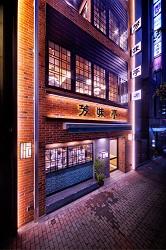
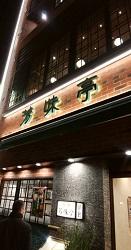
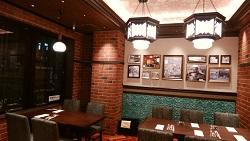
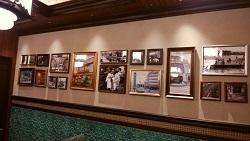
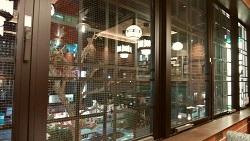
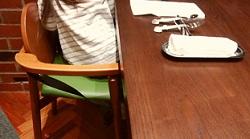
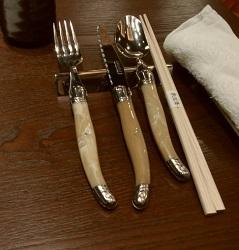
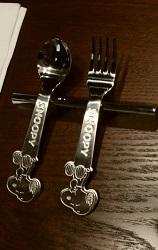

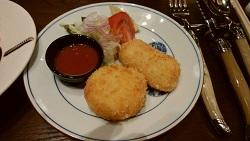
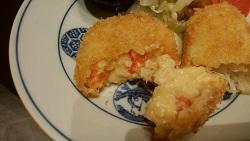
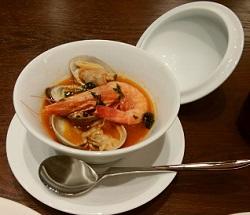
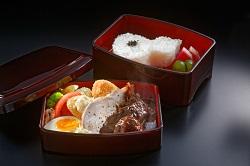

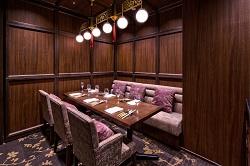
 Kiyosu Bridge, a nationally designated important cultural property, is one of the reconstruction bridges after the Great Kanto Earthquake, and is famous as one of the beautiful bridges that span the Sumida River along with Eitai Bridge.
Kiyosu Bridge, a nationally designated important cultural property, is one of the reconstruction bridges after the Great Kanto Earthquake, and is famous as one of the beautiful bridges that span the Sumida River along with Eitai Bridge.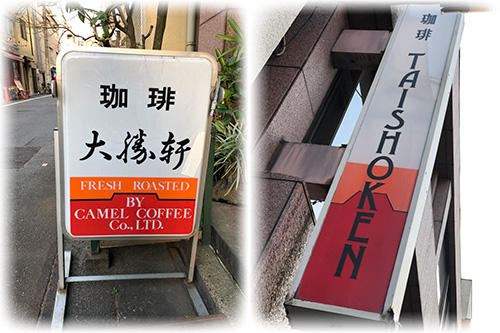
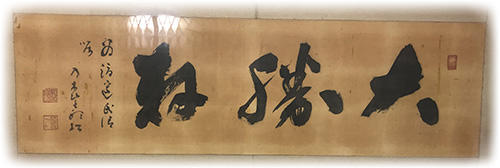
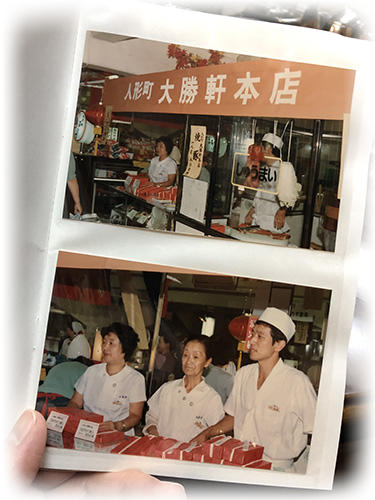
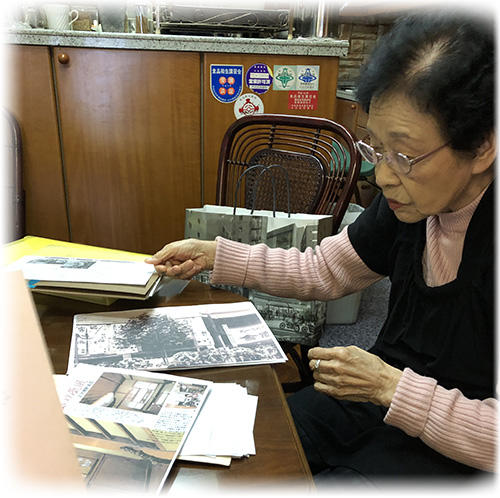
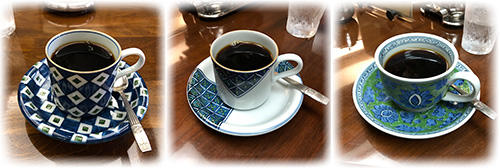
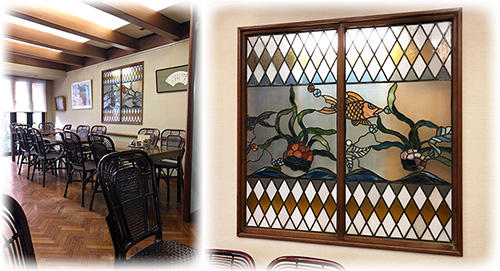
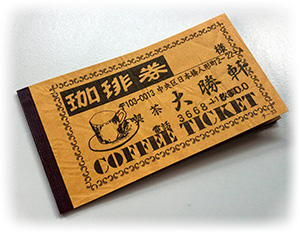
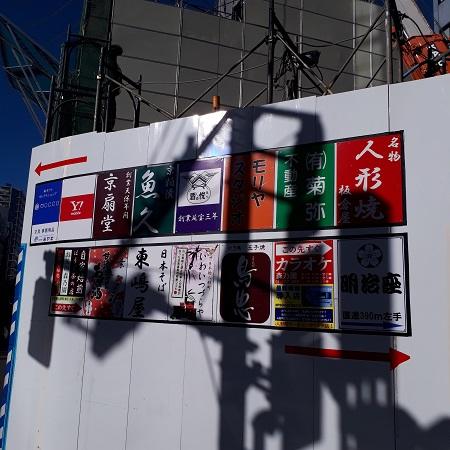
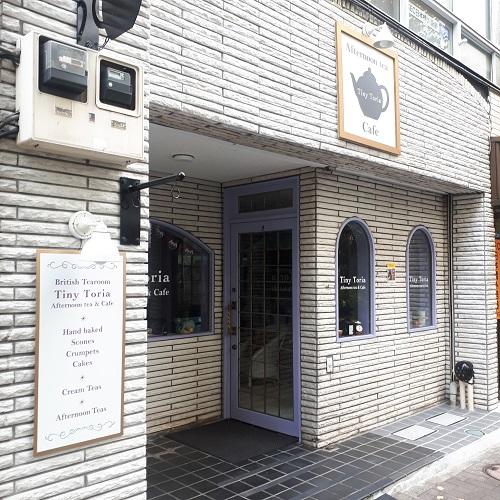
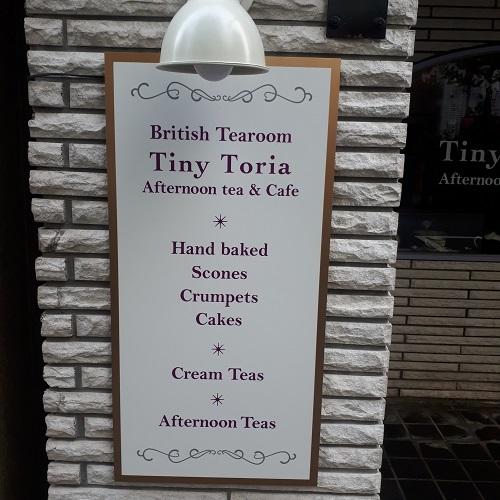
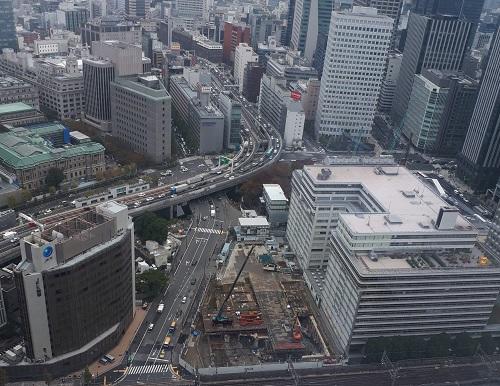 (Slightly expand construction sites only ↓)
(Slightly expand construction sites only ↓)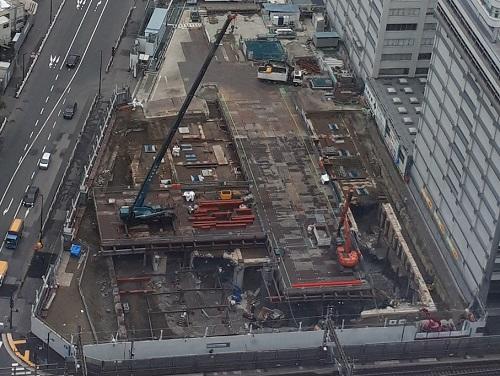
 Matsushima Shrine, one of Nihonbashi Seven Lucky Gods, is located in Nihonbashi Ningyocho, where great power gods are enshrined. According to Monoshiri Encyclopedia in Chuo-ku, "At the time of its foundation, the surrounding area was Kojima in the inlet, and the pine was overgrown in Shimauchi, so it was named."
Matsushima Shrine, one of Nihonbashi Seven Lucky Gods, is located in Nihonbashi Ningyocho, where great power gods are enshrined. According to Monoshiri Encyclopedia in Chuo-ku, "At the time of its foundation, the surrounding area was Kojima in the inlet, and the pine was overgrown in Shimauchi, so it was named."
